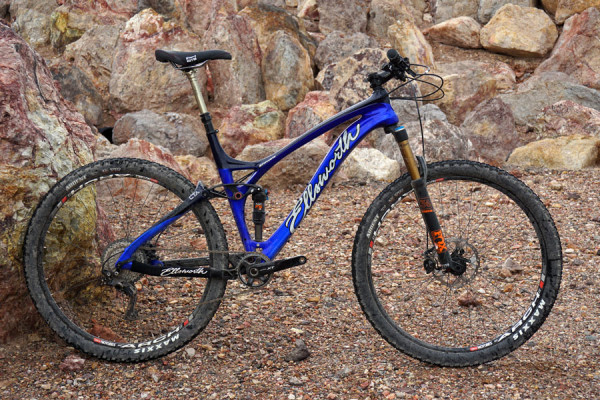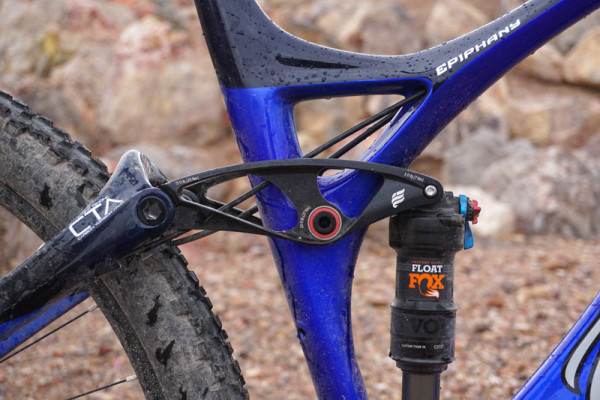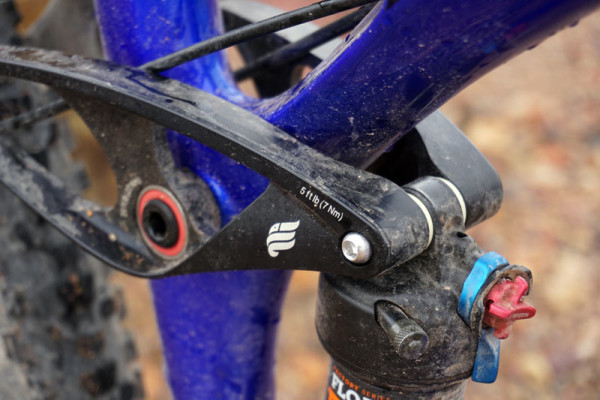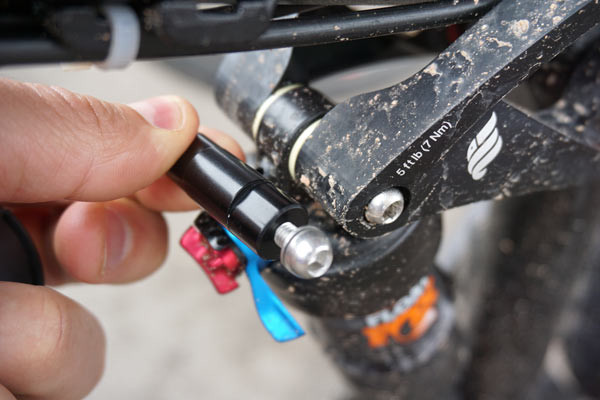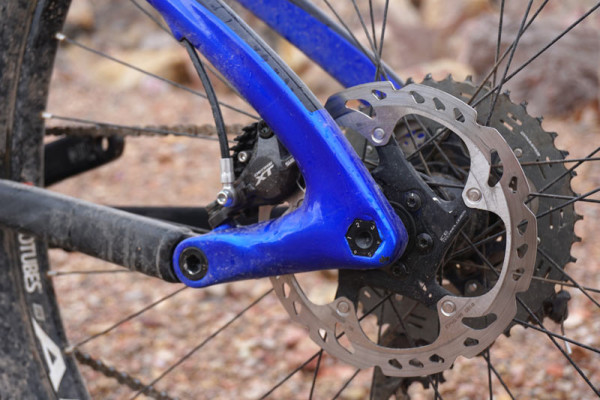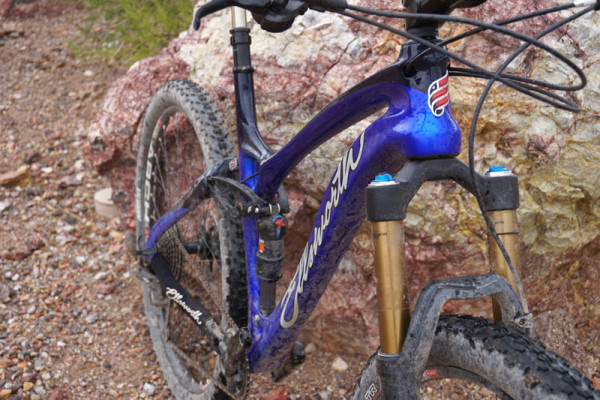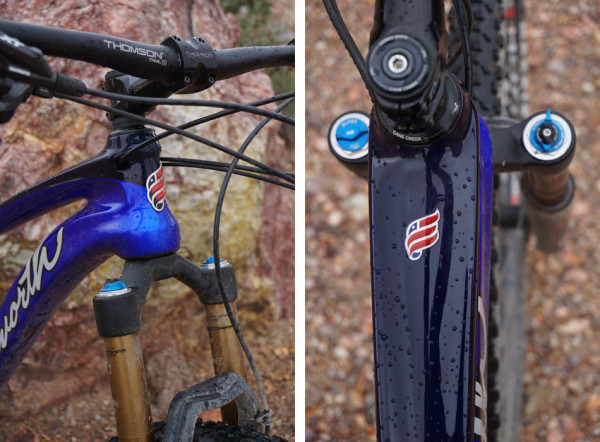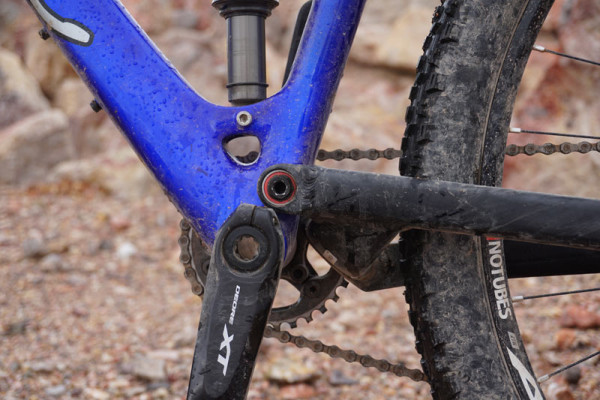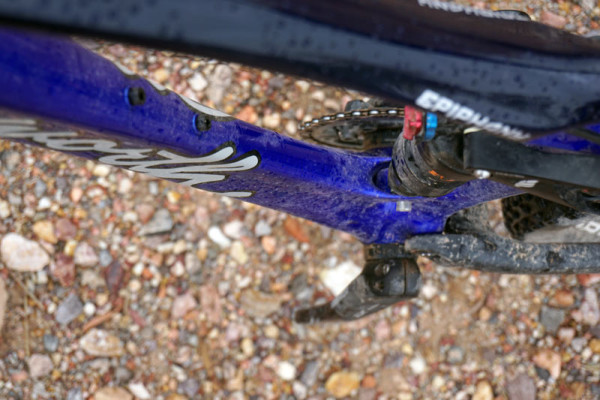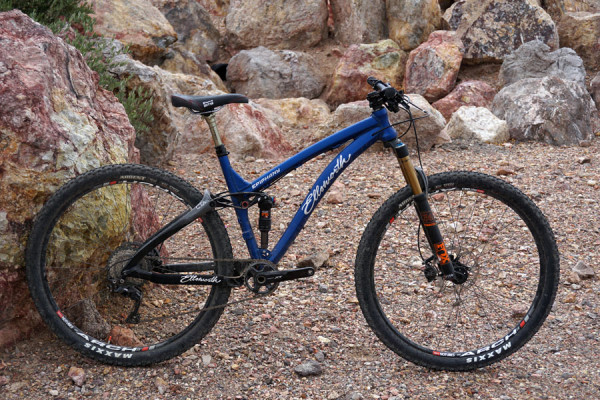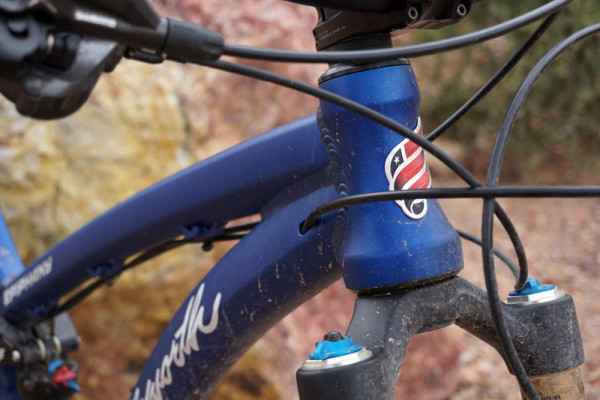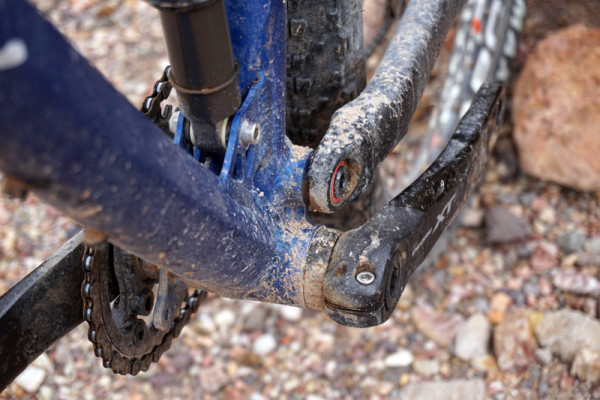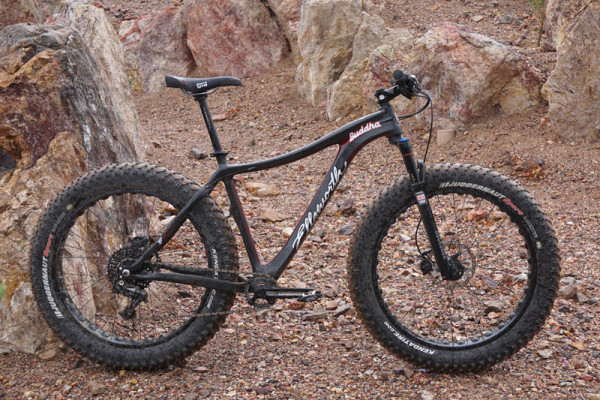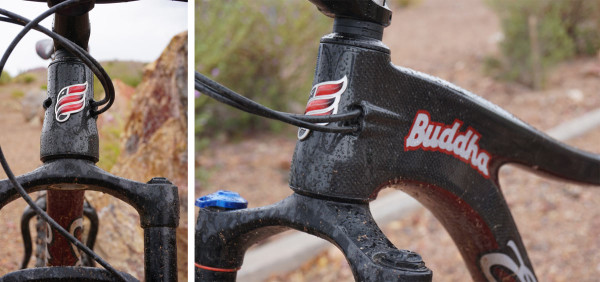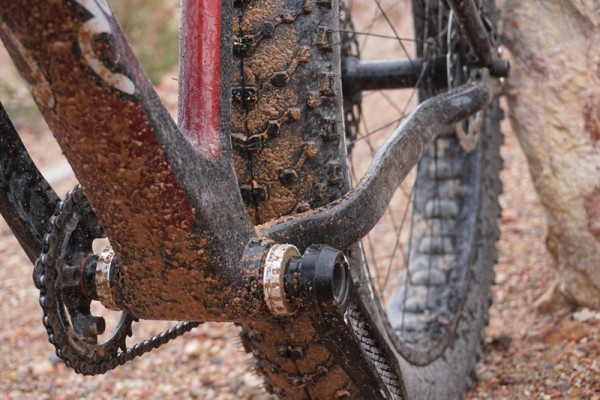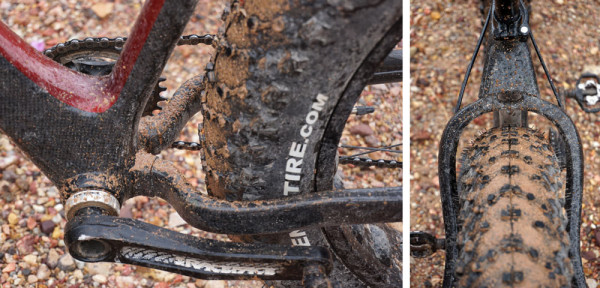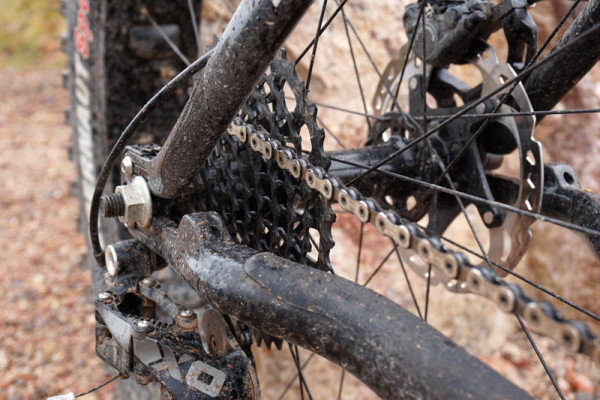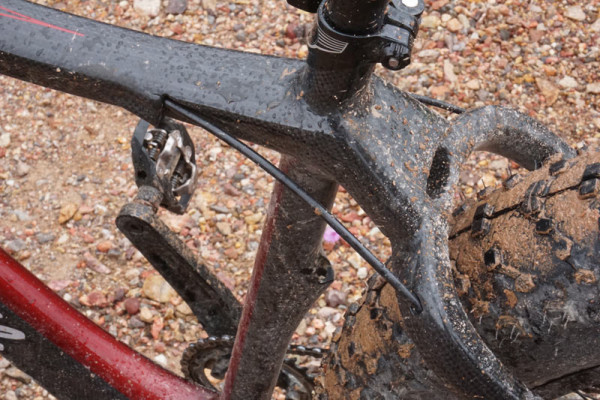In the year sincebeing acquired by BST Nano, Tony Ellsworth has been able to hang up a few hats (sales, management, etc.) and all but sew on his engineering cap and move forward with design ideas and projects that had constantly been back burnered in the day to day of running a company.
Now, those designs have moved into production across their entire line of 2016 full suspension bikes with a redesigned ICT suspension that, combined with the switch to a Boost 148 rear end, is 200% to 300% stiffer than the original that’s carried them along for so many years.
“The bikes already pedaled really well and were active and efficient,” Tony Ellsworth told us. “For 2016, we wanted to make it stiffer so it would track better and handle more predictably.”
To do that, the changed virtually everything about the rear end, coming up with some clever small parts designs to boost stiffness. And, it’s hard to ignore how much better the bikes look now…
The biggest visual change is the shapely, shortened rockers. They’re still CNC’d from 7075 billet, but they’re not as long and get a nice curve. Tony didn’t want to change the ride, which has his zero loss design that claims to put all of your pedaling power directly into forward movement without losing anything to suspension squish.
To keep the kinematics the same, the lower rear pivot moves forward, further from the axle. The side benefit of that was it made space for the rear brake caliper to sit inside the rear triangle.
Boost does a great job of increasing wheel stiffness, but that’s no good if the frame can’t keep up. So they addressed all of the pivot points to keep each side of the bike moving in parallel. A custom shock pin at the front has modified oval ends that fit together like a jigsaw puzzle and connects the two sides of the rocker arm.
The flat faces eliminate it’s ability to “scissor” and create uneven rotational deflection from side to side. That let them get rid of the rocker brace behind the seat tube, too.
They switched from the old Shimano thru axle system on the rear to a custom tapered hexagonal design that slots into the frame to prevent shearing in the back, too. That choice led to something rather unusual – the axle release lever is on the drive side. Here’s why:
The axle has hexagonal shapes on both ends. Like the shock pin, this prevents uneven rotation from side to side. This means it’s can’t be threaded in the traditional sense, so the lever threads into the axle separately.
To keep the system as light as possible, they put the small end inside the derailleur hanger. If reversed, the hanger and dropout section would need to much bigger, so this was the better solution. The lever threads in until snug, then clamped shut to pull it all tight.
The end of the axle is etched with numbers so you can set it to a specific position so that the lever closes at the angle you want. All you need to do is remember which number sits up top.
The rear pivot used to be a simple side by side design. Now it’s a double shear clevis-style lower rear pivot that sandwiches the chainstay inside the pivot to improve stiffness.
Combined, all of that drastically reduces how much torsional deflection the frame will have. Both sides of the rear end operate in sync for smoother suspension movement since it won’t bind at the pivots.
The new Epiphany 27.5’s leverage ratio is a little bit lower with the updated design, at 2.4:1 down from 2.6:1. The 29er stays at a 2:1. The 29er chainstay stayed the same, 27.5″ got a bit shorter.
The front triangle remains very much the same but refines the cable runs on the carbon frames to eliminate the housing inside the frame to save weight. There’s also stealth dropper routing and Di2 ports, but no Sideswing.
The new Epihany comes in 29er, 27.5 and 27.5+, with carbon and alloy options in all three.
The 29er is 130mm front/120mm rear with Boost spcing on both ends. The 27.5 is 150mm front/140mm rear with Boost in the back. It’ll get a Boost front eventually, but hub and fork availability is still tight.
The Plus bike is 130mm front/120mm rear with Boost front and rear. The Plus bikes fit up to a 3.0 tire thanks to a wider chainstay. The seatstays are the same, which opens up a couple options – you could theoretically just buy the other chainstays and the appropriate fork and then sub in the 29er wheels. Or just buy the 27.5+ bike and put 29er wheels with 2.2 tires in there when you want it to be a little racier.
All have a threaded BB, no more pressfit like on the prior model.
There are fewer pieces overall, so even though the new linkage system is a bit heavier, they say the frames are anywhere from 50g to 150g lighter.
The alloy Epiphanies have a slightly slacker head angle than the carbon. For example, the 27.5 is 69.5° in carbon and 67.5° in alloy. Full geometry charts are available on their website.
So, carbon is targeted more at the XC/Marathon race crowd with quick, nimble steering. The alloy bikes are aimed more at trail and light enduro riding where the course is more pedally than full on downhill coasting.
The seatstays on the alloy frame are the same carbon part as on the full carbon bikes. Those will be the first frame part to be made in San Diego. To get production up and running on time, though, they had to open tooling in Taiwan but they’re headed over there this month to train with them and bring the tooling and molds back and should be making them in house by year’s end.
Across the entire lineup, all bikes get Kashima coated fox suspension without any remotes. They wanted to maintain the premium performance nature of their bikes by giving even the lowest price models the best suspension.
As the lineup gets overhauled, the new ICT design and Boost spacing carries over to the Moment (160mm travel front and rear) and Dare (200mm travel DH). Both of those add their Shock Shuttle, which allows you to tweak the lower shock mounting point for geometry and leverage ratio changes. The Truth XC full suspension bike drops out of the line for next year, but may not be gone forever.
The Buddha is a new carbon hardtail fat bike that keeps the original Ellsworth aesthetic.
Designed around 100mm front suspension, and all complete bikes have the Bluto fork.
It can run a double chainring if you want, but complete bikes will be sold as 1x only.
The rear dropouts are adjustable and sandwich the parts together but can open all the way up to allow belt drive use.
The production bikes will use a custom 12×197 alloy axle, not the nuts and bolts used here to get the bike to the show in time.
